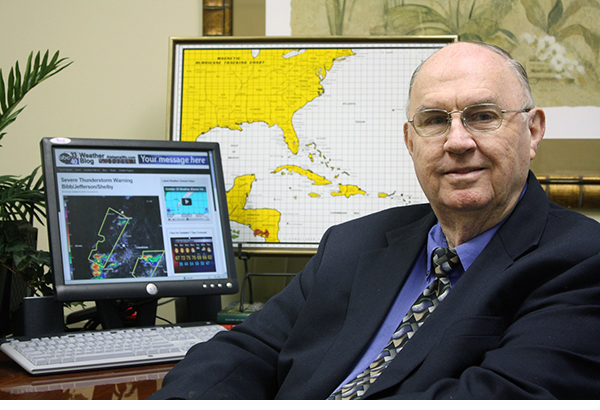Do Storms Weaken as They Move into Georgia?
Wayne in Georgia wrote:
I stayed up last night watching the two lines of storms approach us. We live just west of Marietta. I lived in Birmingham for 14 years and in the Atlanta area now for 3 years. I watched each line of storms last night basically fall apart before they reached us. All we got were sprinkles. No thunder, no lightning, no wind, just sprinkles. I’ve observed during my 3 years over here that, on a percentage basis, the storms coming from MS & ALA seem to weaken by the time they get here or like last night fall apart, the tornado hitting downtown Atlanta last year not withstanding. My Wife, who is not a weather bug like me, has mentioned this same to me several times. Yes we do have severe weather but it appears to me, once again on a percentage basis, the storms coming out of ALA. seem to weaken or like last night, fall apart before reaching us. Would like to hear any comments on my observations.
One final note, I believe the storm that hit downtown Atlanta may have fired up here in Georgia but not for sure on that one.
Wayne…I think that it is a function of timing. It does seem that we have had a preponderance of storms arriving into Alabama and eventually into Georgia at the climatologically less favorable time of day for strong storms (late night, pre-dawn.)
It seems that we have dodged a bullet on a lot of systems lately because our moisture influx was disrupted by strong storm complexes to our south. It seems to me that there are more of those instances than in the past, but again, it may be my own memory bias.
It is my theory that there are fewer big storm events in Georgia than in Alabama because of the more readily available inflow of moisture into our state. Georgia has a higher propensity to easterly wedges also, which can lead to more stable airmasses, like this past Thursday’s evening. This means that the storms weaken as they move east.
Now having said all that, there certainly are cases where storms have been violent in Mississippi, weakened over Alabama, and turned violent again over Georgia. The anniversary of one of those cases is coming up. In 1936, on April 5th, Tupelo was struck by a major F5 tornado that killed 216 people. Some of the storms did affect Northwest Alabama that evening, but Alabama was spared the brunt of the storms. The next morning, an F4 tornado devastated much of the town of Gainesville, Georgia.
(I realize that the Fujita scale has not been around that long, but Grazulis did rate most all U.S. tornadoes since the 18th century in his magnificent research project that culminated in what I call “the phone book of tornadoes.”
I find it quite interesting that Georgia has never had an F5 tornado (using Grazulis as the source.) Alabama has had four.
Between 1880-1991 according to Grazulis, Alabama had 47 F4/F5 tornadoes. Georgia had 27.
Between 1880-1991, Alabama experienced 695 F2 or greater tornadoes. Georgia: 477.
So, you are “not all wet,” Wayne. You are definitely onto something climatologically.
The Dixie Tornado Alley extends into Alabama from the west. It does not extend into Georgia, so Alabama is climatologically more likley it seems to see significant tornadoes.
You separated the Atlanta tornado from March 2008, because that storm strengthened as it approached the city. You might have heard there was some recent research that hypothesized that the storm was influenced by the urban heat island of Atlanta. There could be some credence to that.
Thansk for sharing your theory. Now, what does everyone else thinK?
Category: Uncategorized















